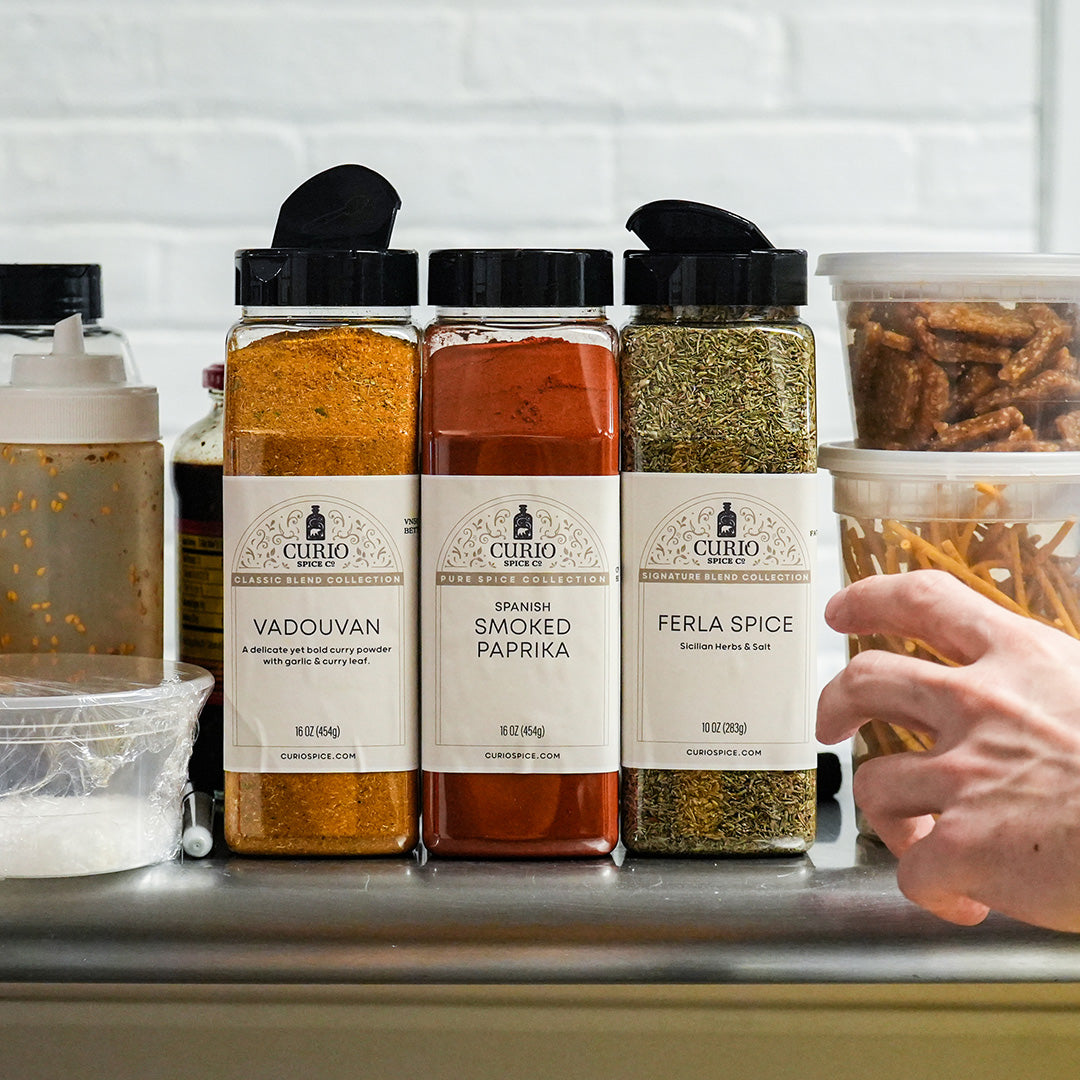How Spicy is "Spicy"?
A few years ago I overheard my sister compliment one of my aunts on some turkey meatballs she had made. “They have a nice little kick to them!” my sister said with her mouth full.
“Thank you! They have a good amount of heat, right?” my aunt replied. “The garlic and black pepper give them a nice kick.”
I cherish the memory because it serves to highlight just how deeply subjective ‘spicy hot’ can be. And to be fair, piperine, the chemical compound in peppercorns that makes them hot can be pretty dang hot. You just don’t generally nosh on a handful of whole peppercorns- though you can watch Josh, our marketing manager, do just that on Instagram.
Similar to the infamous capsaicin of chilies, piperine stimulates heat receptors in your mouth. So when chilies and peppercorns get described as ‘hot’, that is factually true, if semantically confusing! It also helps to explain why everyone has a different experience with the sensation, due to differences in pain tolerance, nerve receptors, and de-sensitizing exposure.

Capsaicin not only stimulates heat receptors, but it also stimulates pain receptors. Depending on the concentration, this can irritate your tongue, and also your lips, gums, or any skin that came in contact with the compound. When handling hot chilies, wear kitchen gloves or promptly scrub any exposed skin with dish soap and the scrubby side of a sponge to physically remove the irritating residue. And contrary to popular advice, the heat is actually not in the seeds! It is in the white membrane surrounding the seeds, so removing that will tame some of the heat of fresh chilies.
The heat, or pungency as it is officially called, of chilies is measured using the Scoville scale, but what is hot to me might be mild to you, and visa versa. This is not to say that the Scoville scale is useless! It can still be very useful for gauging whether or not you will enjoy a dish that calls for scotch bonnet chilies, or if you should substitute a relatively milder chile like comapeño or scale down further to suit your palate.
What is the Scoville scale? In essence it ranks chile peppers by how hot they are, in Scoville Heat Units (SHU). Invented in the early 1900s by Wilbur Scoville, the process originally involved a panel of trained tasters, but is now frequently done in a lab. The recent innovation of using chemical analysis to determine the concentration of capsaicinoids- the group of chemicals responsible for the sensation of heat, of which capsaicin is the most famous- means the contemporary Scoville scale itself is less subjective than it used to be.
However that does not mean that your experience of eating a given chile will be less subjective! While some people will chomp on a habanero like it’s a weird wrinkly little apple, others feel that capsaicin should be reserved exclusively for bear repellant. And both viewpoints are valid. Fortunately the world of chile peppers includes flavorful and delightful fruits in a vast array of heat levels.
If you don’t enjoy the burn, then try guajillo and ancho chilies. They are mild but bursting with deep, umami flavor. Looking for something funky and medium hot? Chipotle chilies are ripened jalapeños that have been smoked and ours have rich notes of tobacco, raisins, and raspberries. Urfa chile flakes are not smoked, but have a natural smokey flavor, similar heat to chipotle, and a lovely tobacco-y, sweet/tart flavor with a touch of salt.

Find a chile that has a level of heat you are comfortable with, and look at where it lands on the Scoville scale. Now you can gauge if you will like the bright heat of Thai chilies, or want to stick with the moderate heat and tomato like flavor of Sicilian chile flakes. You can even go more moderate and use ground Hatch chile! They are renowned for their bold flavor, tasting of New Mexican sunshine with a hint of smokey, earthy depth and a smooth, mild heat.
An important thing to keep in mind about chilies is that freshness will strongly impact heat and flavor. Dried chiles and chile flakes past their prime will lose heat, becoming dusty and bland. Many grocery store spices are already over a year old before hitting shelves, and frequently much older than that. So it can come as a surprise to discover that our sweet paprika is not just red flavored, a dash of our cayenne can make your upper lip sweat, and a few crushed tabasco chilies can bring on hiccups.
The good news is that the more ‘spicy hot’ things you eat, the higher your tolerance will get. And if that is something you want to pursue, the effort is worth the commitment, I promise. Ask my sister- she recently revealed that these days she uses gochugang, Korean fermented chile paste, on her sandwiches instead of mustard. Which, honestly? That stuff is a slippery slope to eating homemade habanero pickles out of the jar (followed by a lot of cheese, because sometimes there is too much of a good thing) 🌶️
Sources:
http://aromatum.blogspot.com/2018/03/an-age-old-question.html
https://en.wikipedia.org/wiki/Piperine
https://en.wikipedia.org/wiki/Capsaicin
https://en.wikipedia.org/wiki/Scoville_scale
https://scovillescale.org/chili-pepper-scoville-scale/
Photos by Grant Burley


 Infographic designed by Ityng Deng, Curio's Marketing & Graphics Coordinator.
Infographic designed by Ityng Deng, Curio's Marketing & Graphics Coordinator.








Leave a comment